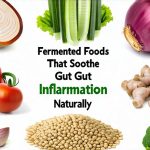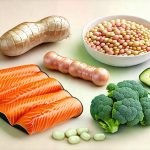The gut microbiome – an incredibly complex ecosystem residing within our digestive tract – profoundly impacts overall health, extending far beyond digestion itself. In recent years, fermented foods like yogurt, kefir, sauerkraut, kimchi, kombucha, and miso have gained immense popularity as a means to support this microbial community. These foods introduce probiotics (live beneficial bacteria) and prebiotics (food for those bacteria), theoretically improving gut health. However, what happens when you stop consuming these regularly? Many individuals experience changes in stool texture, prompting questions about the connection between fermented food cessation and digestive function. This is a surprisingly common phenomenon that deserves deeper exploration, not as an indicator of something necessarily “wrong”, but rather as a sign of a gut adapting to a new normal.
The initial enthusiasm for fermented foods often stems from perceived improvements in digestion – reduced bloating, improved regularity, or even alleviation of IBS symptoms. When these foods are consistently included in the diet, the microbiome can shift, potentially increasing bacterial diversity and overall function. This leads to altered metabolic processes within the gut, influencing how we digest food, absorb nutrients, and even process fiber. Therefore, removing a regular source of probiotics and prebiotics isn’t simply eliminating a food; it’s disrupting an established ecological balance. The resulting changes in stool texture are often a temporary adjustment period as the microbiome recalibrates itself to operate with different resources and conditions. It is crucial to remember that gut health is highly individual, meaning responses can vary significantly between people.
Understanding the Shift: Why Stool Texture Changes
The most common change reported after cutting fermented foods is a shift towards looser stools or even temporary diarrhea. This isn’t necessarily alarming; it often indicates that the gut flora are adjusting to less available fermentable carbohydrates – the food source for many probiotic bacteria. Fermented foods contain varying amounts of these carbs, and their regular consumption encourages specific bacterial populations to thrive on them. When you remove the food source, those populations may decrease in number while other species adapt or become more prominent. This microbial shift can alter how quickly waste moves through the digestive system, leading to changes in stool consistency.
Another factor contributing to this change is a potential reduction in short-chain fatty acid (SCFA) production. Probiotic bacteria ferment fiber and carbohydrates into SCFAs like butyrate, propionate, and acetate. These are vital for gut health, providing energy for colon cells, reducing inflammation, and improving intestinal motility. A decrease in these beneficial compounds due to fewer probiotic bacteria can affect the overall function of the digestive tract, impacting stool formation and transit time. It’s important to note that we also obtain SCFAs from fiber-rich foods, so a diet lacking sufficient fiber will exacerbate this effect.
Finally, it’s possible the initial benefits experienced with fermented food consumption were partially due to their impact on gut motility – essentially, how quickly things move through your system. Some individuals find they experience improved regularity because of the increased microbial activity and SCFA production. Removing these foods can reduce this stimulation, leading to slower transit times in some cases, or conversely, a more rapid expulsion as the gut attempts to readjust. The key takeaway here is that stool texture changes are rarely a sign of illness, but rather a natural response to a change in dietary habits and microbial environment.
Navigating Temporary Digestive Discomfort
If you experience changes in stool texture after stopping fermented foods, it’s important to approach it with patience and observation. Here’s how to navigate the temporary discomfort:
- Hydration is paramount: Diarrhea or looser stools can quickly lead to dehydration, so increasing your water intake is essential. Aim for at least eight glasses of water per day. Consider electrolyte replenishment if diarrhea persists.
- Focus on easily digestible foods: Temporarily reduce your intake of high-fiber foods and complex carbohydrates that may further irritate the digestive system. Opt for bland options like rice, bananas, applesauce, and toast (the BRAT diet).
- Reintroduce fiber gradually: As your digestion settles, slowly reintroduce fiber-rich foods to support a healthy gut microbiome. Avoid overwhelming your system with large amounts of fiber all at once. Prioritize soluble fiber sources like oats and cooked vegetables.
It’s also important to differentiate between temporary discomfort associated with dietary change and signs of underlying health issues. If you experience severe diarrhea, bloody stools, persistent abdominal pain, or fever, it’s crucial to consult a healthcare professional to rule out other potential causes. Remember that self-diagnosis can be harmful, and seeking expert advice is always the safest course of action.
The Role of Dietary Fiber in Gut Health
While fermented foods are beneficial, they shouldn’t be considered a replacement for a fiber-rich diet. In fact, dietary fiber remains arguably the most important factor in maintaining a healthy gut microbiome. Fiber provides the primary food source for our gut bacteria, allowing them to thrive and produce essential SCFAs. When you cut fermented foods, ensuring adequate fiber intake becomes even more critical to support microbial diversity and function.
- Aim for 25–35 grams of fiber per day: This can be achieved through a variety of sources, including fruits, vegetables, whole grains, legumes, nuts, and seeds.
- Prioritize diverse fiber sources: Different types of fiber feed different bacterial species. A varied diet ensures a more robust and resilient microbiome. Inulin from onions & garlic, resistant starch in cooled potatoes or rice, pectin in apples – all contribute to microbial diversity.
- Gradually increase fiber intake: Sudden increases can cause bloating and gas, so gradually incorporate more fiber into your diet over several weeks.
Often, the initial benefit experienced with fermented foods is amplified when combined with a naturally high-fiber diet. The synergy between prebiotics (from fiber) and probiotics (from fermentation) creates an optimal environment for gut health. Cutting fermented foods without simultaneously maintaining sufficient fiber intake can significantly diminish the overall benefits to your digestive system.
Reintroducing Fermented Foods or Finding Alternatives
If you find that cutting fermented foods negatively impacts your digestion, you have a couple of options. The first is to reintroduce them gradually. Start with small portions and observe how your body responds. You might discover that certain fermented foods are better tolerated than others. Kefir, for example, often causes less digestive upset than kimchi due to its different microbial composition and lower spice content.
Alternatively, you can explore other ways to support your gut microbiome without relying solely on fermented foods:
- High-fiber diet: As mentioned previously, a fiber-rich diet is the cornerstone of gut health.
- Prebiotic-rich foods: Garlic, onions, leeks, asparagus, bananas, and oats all contain prebiotics that feed beneficial bacteria.
- Consider probiotic supplements (with caution): While not equivalent to whole food fermented sources, probiotic supplements can provide a targeted dose of specific bacterial strains. However, it’s important to choose high-quality products from reputable brands and consult with a healthcare professional before starting any supplement regimen. [Supplements are not regulated the same way as medications].
- Focus on overall lifestyle factors: Stress management, adequate sleep, and regular exercise all contribute to a healthy gut microbiome.
Ultimately, the goal isn’t necessarily to force yourself to eat fermented foods if you don’t enjoy them or find they cause digestive issues. It’s about finding a sustainable approach to supporting your gut health that fits your individual needs and preferences. Listen to your body, observe how it responds to different dietary changes, and prioritize a holistic lifestyle that promotes overall well-being. If experiencing discomfort after spicy foods, consider [GERD and rapid heartbeat] as a potential factor. Also, be aware of [stool color and texture changes] which may warrant testing. For those looking for relief during high fiber intake, explore [stomach soothing foods]. Those impacted by antibiotics can look to [foods that restore gut balance]. Finally, if needing to eliminate certain foods, consider [how to safely reintroduce foods]. And don’t forget [how to reduce gas] while making changes!


















